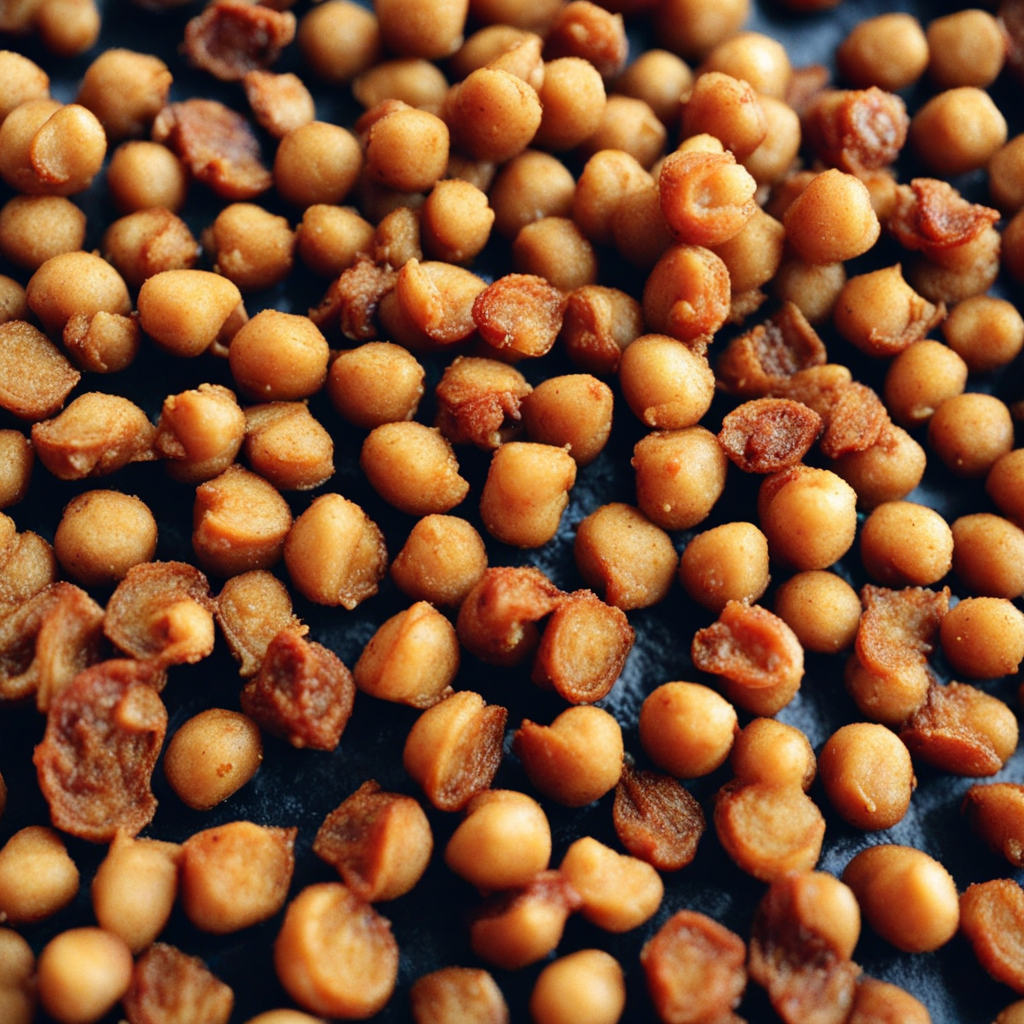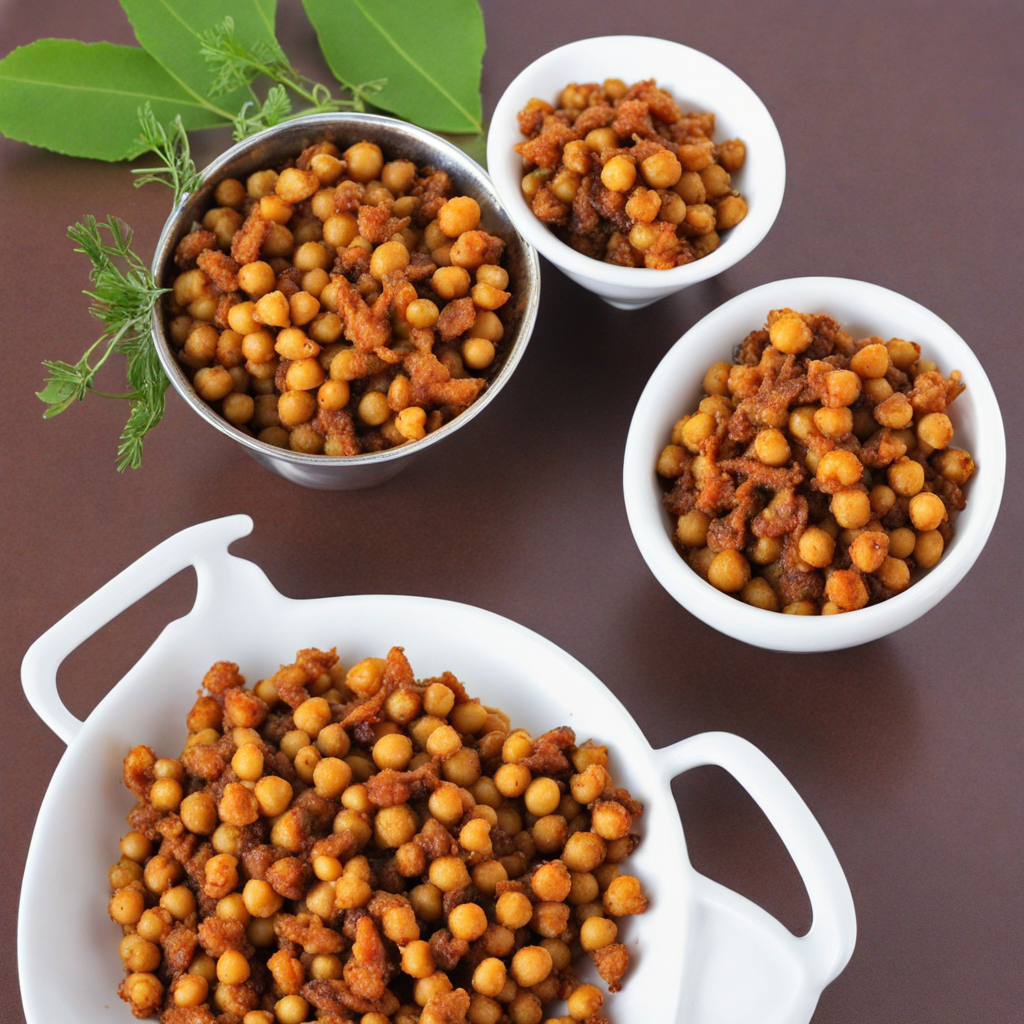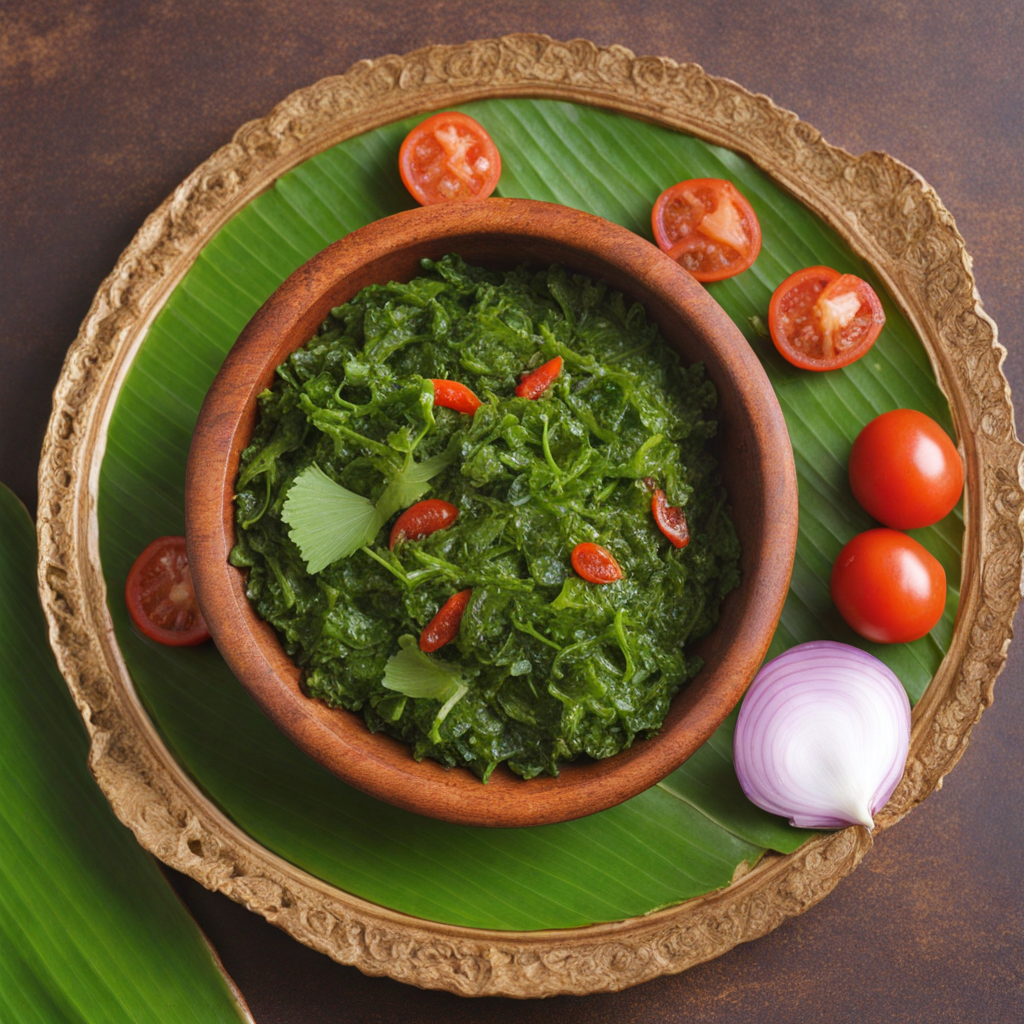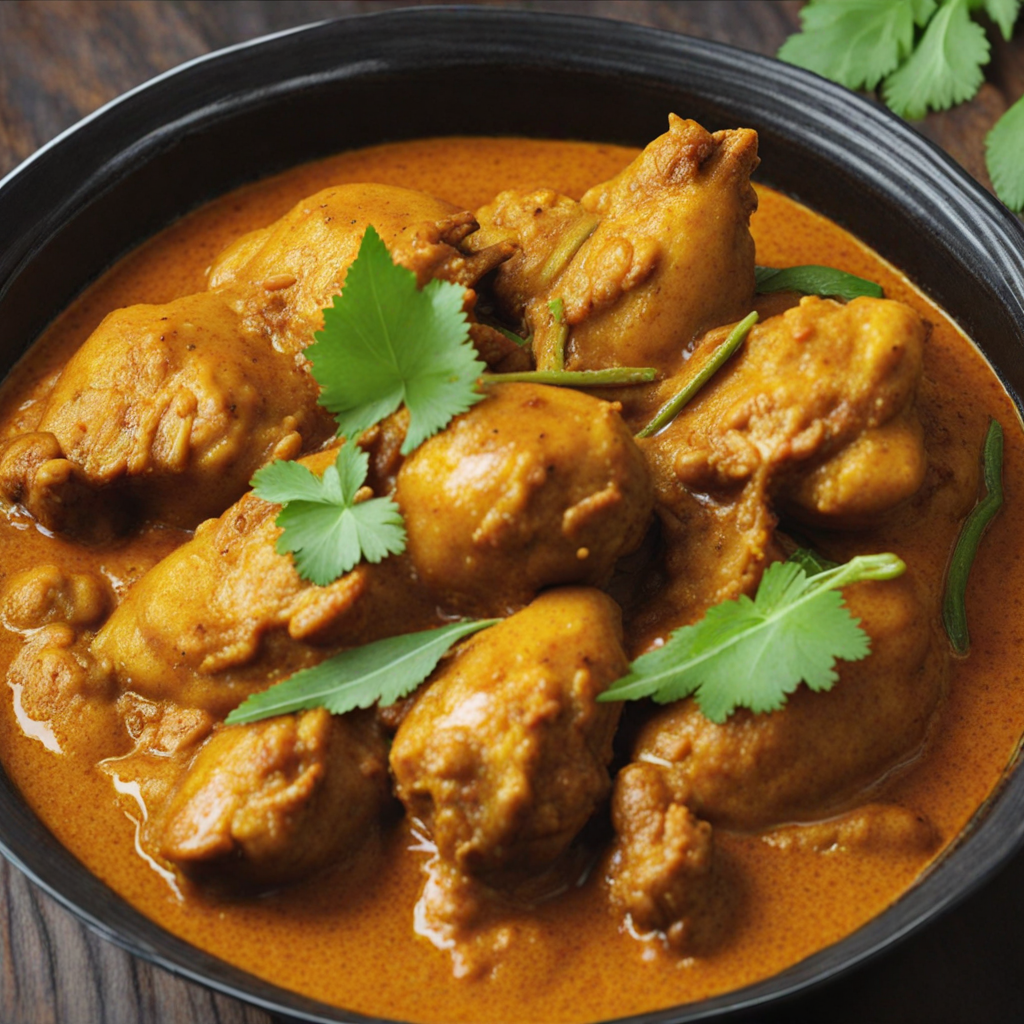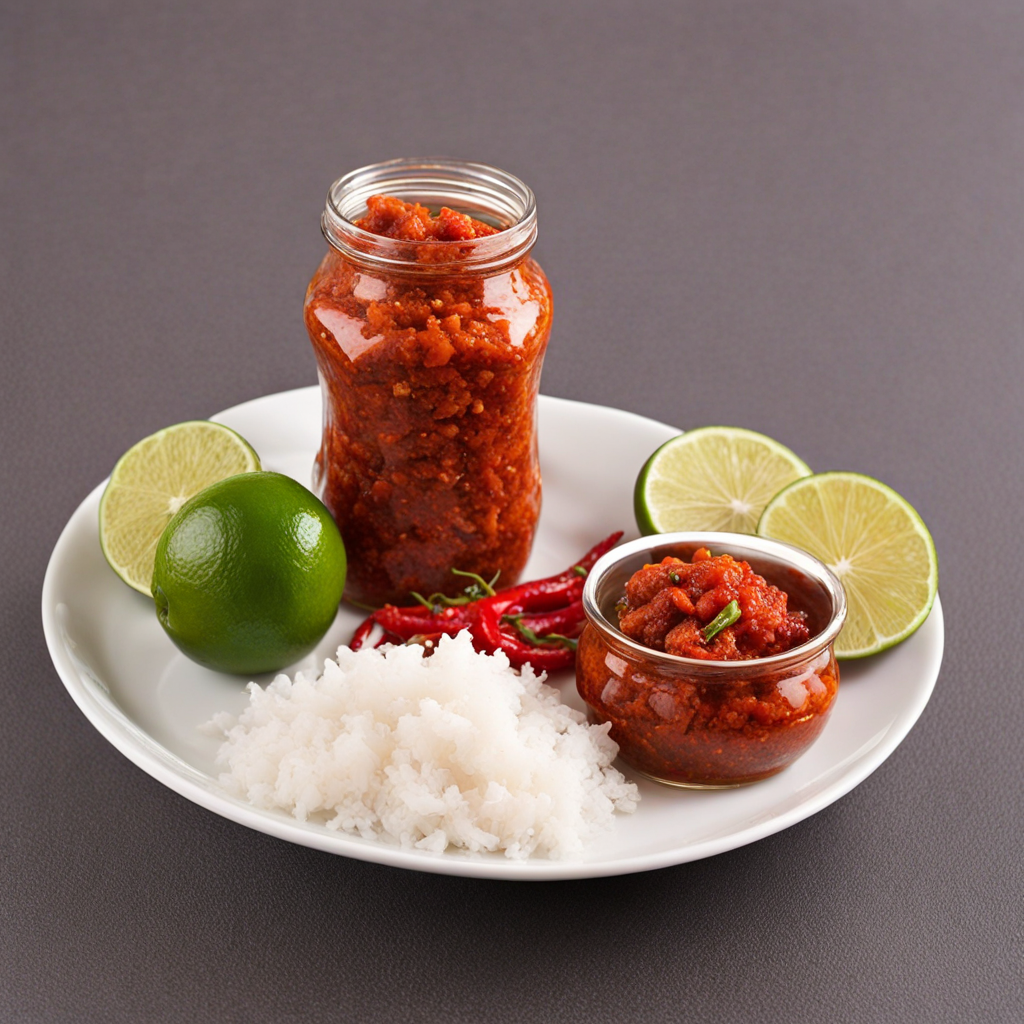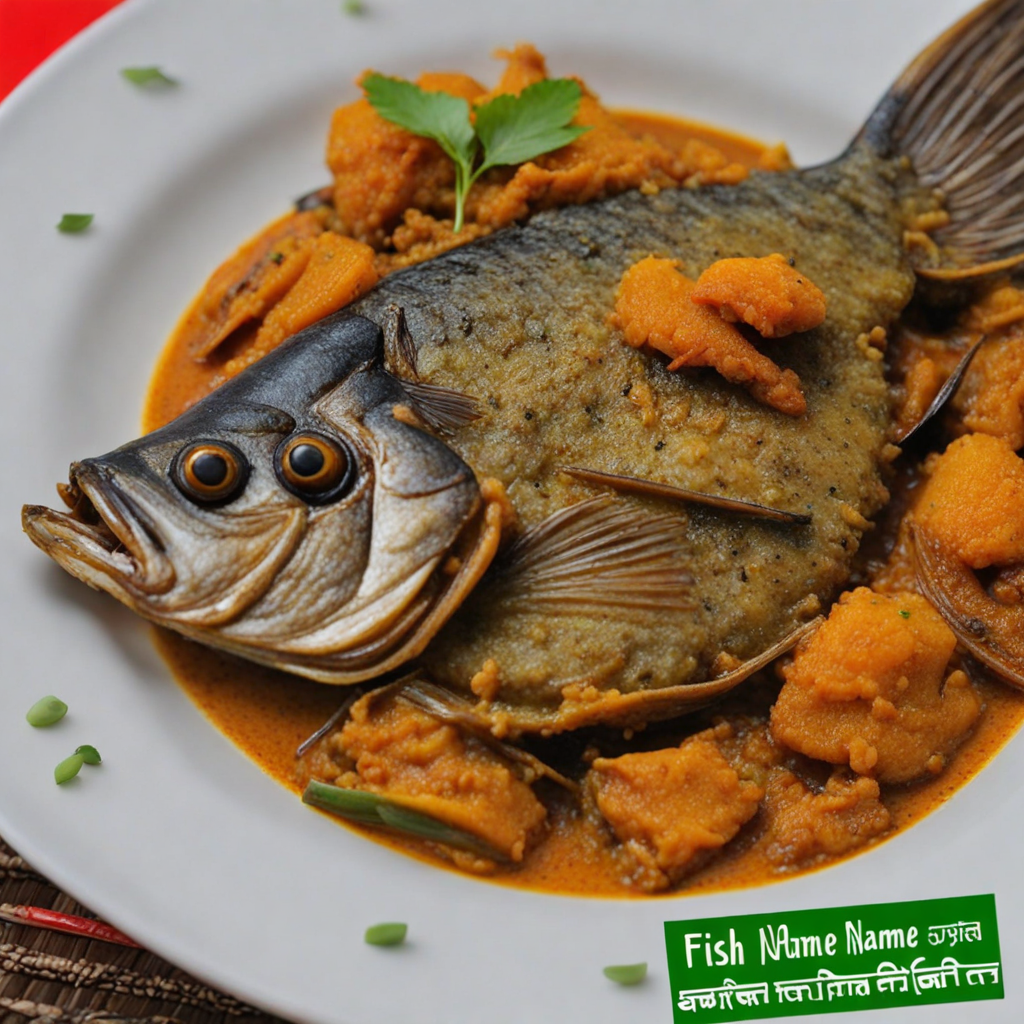Fried Spicy Chickpeas
Fried Spicy Chickpeas, a popular snack from Sri Lanka, are a delightful explosion of flavor and texture. These crispy morsels are made by frying chickpeas until they achieve a perfect golden-brown hue, creating a crunchy exterior that contrasts beautifully with their soft and nutty interior. The process begins with soaking the chickpeas, which not only enhances their texture but also allows them to absorb the vibrant spices that make this dish truly special. The use of high-quality oil in frying ensures that each chickpea is enveloped in a delicious, crispy shell that is utterly addictive. The magic of Fried Spicy Chickpeas lies in their seasoning. A medley of spices, including chili powder, turmeric, cumin, and black pepper, infuses each chickpea with a kick of heat and depth of flavor. Some variations also incorporate a touch of garlic or ginger, adding an aromatic layer that elevates the dish further. The spice blend is often adjusted to suit personal preferences, making it a customizable treat for those who enjoy experimenting with heat levels. The result is a tantalizing balance of spicy, savory, and slightly earthy notes that dances on the palate. Served as a snack or appetizer, Fried Spicy Chickpeas are perfect for enjoying alongside a refreshing beverage or as part of a larger meal. Their portability and satisfying crunch make them a favorite for gatherings, picnics, or simply as a delightful treat at home. As you bite into these crispy chickpeas, you'll experience a burst of flavor that transports you to the vibrant streets of Sri Lanka, making each bite a little journey into its rich culinary heritage.
How It Became This Dish
The History of Kadala Thel Dala: A Culinary Gem of Sri Lanka #### Origins Kadala Thel Dala, a delicious dish from Sri Lanka, is a testament to the island's rich culinary heritage that has evolved over centuries. At its core, Kadala Thel Dala consists of black chickpeas (kadala) sautéed in coconut oil (thel) with an array of spices, often served with rice or hoppers. The dish is not just a reflection of the ingredients available in the lush landscapes of Sri Lanka but also a symbol of the cultural intermingling that has shaped the island’s cuisine. The origins of Kadala Thel Dala can be traced back to the ancient agricultural practices in Sri Lanka, where pulses, particularly chickpeas, have been cultivated for thousands of years. Archaeological evidence suggests that the consumption of legumes, including chickpeas, dates back to the Anuradhapura period (circa 377 BCE to 1017 CE), linking the dish to the early agrarian societies of Sri Lanka. The use of coconut oil is particularly significant, as coconuts have been a staple in Sri Lankan cuisine, utilized for their versatility and health benefits. #### Cultural Significance Kadala Thel Dala holds a special place in the hearts of Sri Lankans, often associated with traditional festivities and everyday meals. It is a dish that transcends class and status, enjoyed by both the humble villager and the affluent urban dweller. The preparation of Kadala Thel Dala is often a communal affair, with families gathering to cook and share the meal, fostering a sense of community and togetherness. In Sri Lankan culture, food is not merely sustenance but an integral part of social rituals and celebrations. Kadala Thel Dala is often served during religious ceremonies, weddings, and festive occasions, symbolizing abundance and hospitality. The dish is particularly popular during the harvest season, reflecting the agrarian roots of the Sri Lankan way of life. Moreover, Kadala Thel Dala is often paired with rice, a staple food in Sri Lanka, creating a harmonious balance of flavors and textures. The combination of the earthy, nutty taste of the chickpeas with the richness of coconut oil and the aromatic spices creates a dish that is both comforting and satisfying. It is also commonly enjoyed with condiments like sambol, enhancing its flavor profile and adding a zesty kick. #### Development Over Time As Sri Lanka underwent various political, social, and economic changes over the centuries, so too did its culinary landscape. The colonial period, particularly during the Portuguese, Dutch, and British rule, introduced new ingredients and cooking techniques to the island. Spices such as cinnamon, nutmeg, and cloves became integral to Sri Lankan cuisine, and the incorporation of these flavors into traditional dishes like Kadala Thel Dala marked a significant evolution. The British colonial era, in particular, saw the introduction of tea plantations, which transformed the agricultural landscape of Sri Lanka. As the economy shifted, so did the dietary habits of the people. However, traditional dishes like Kadala Thel Dala remained popular, serving as a reminder of the island's agricultural roots amidst the changes. The post-independence era brought about a resurgence in the celebration of local cuisine, with a renewed focus on traditional foods and practices. The rise of tourism in the late 20th century further propelled the appreciation of Sri Lankan culinary heritage, and Kadala Thel Dala became a staple on restaurant menus catering to both local and international palates. In recent years, there has been a growing movement towards sustainable and local eating, with many chefs and home cooks alike embracing traditional dishes. Kadala Thel Dala, with its nutritious ingredients and simple preparation, fits perfectly into this trend. The dish is not only delicious but also offers a healthy alternative to more processed foods, making it increasingly popular among health-conscious individuals. #### Modern Interpretations While the traditional recipe remains beloved, modern interpretations of Kadala Thel Dala have emerged, reflecting the changing tastes and lifestyles of contemporary diners. Chefs experimenting with fusion cuisine have introduced variations of the dish, incorporating elements from other culinary traditions. For instance, some versions may include a medley of vegetables or be served with a spicy tomato salsa, adding a new dimension to the classic. Moreover, the rise of vegetarianism and veganism has also influenced how Kadala Thel Dala is prepared and consumed. With chickpeas being an excellent source of plant-based protein, the dish is increasingly popular among those seeking meat alternatives. The simplicity of the recipe allows for creativity, leading to new adaptations that respect the traditional roots of the dish while appealing to modern dietary preferences. #### Conclusion In conclusion, Kadala Thel Dala is more than just a dish; it is a narrative woven into the fabric of Sri Lankan culture and history. From its ancient agricultural origins to its role in contemporary dining, the dish embodies the spirit of the island's people, celebrating community, tradition, and resilience. As Sri Lankans continue to cherish and innovate upon their culinary heritage, Kadala Thel Dala stands as a delicious reminder of the rich tapestry of flavors and stories that define this beautiful island nation. Whether served at a festive gathering or enjoyed as a comforting meal at home, Kadala Thel Dala will undoubtedly continue to be a beloved staple for generations to come.
You may like
Discover local flavors from Sri Lanka


